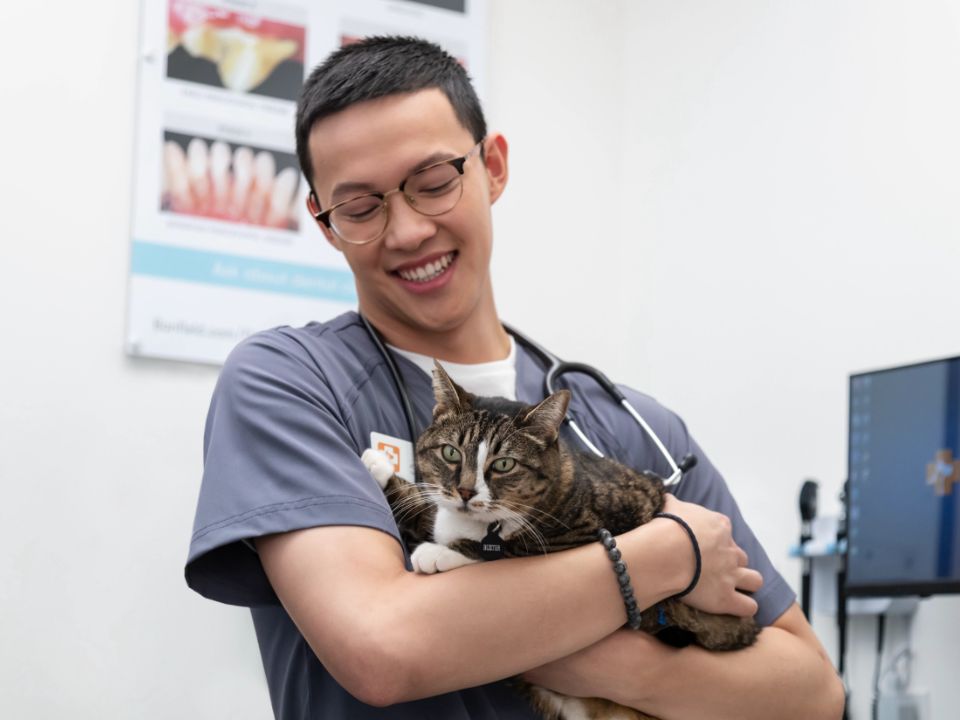pick healthy cat treats
What are the “best” treats for cats and kittens?
It can be fun to give cats treats! Who doesn’t love hearing eager meows and purring, or watching their kittyBAE batting around a treat ball with adorable energy? In all the fun, it can be easy to ignore that treats are designed to be just that — treats — and not a major portion of your pet’s diet. Here’s what to know before you stock up.

Treats are great for training! Kittens can have treats when they’re fully weaned and on solid food. Stick to a few small treats a day — you want them to be special, not an expected perk.
How many cat treats can my cat have a day?
It may seem unfair, but calories count for cats, too. Quality cat food is designed to deliver both the calories and the nutrients that cats need. But cat treats are usually designed to be only delicious, not nutritious. So a lot of treats mean a lot of empty calories for your cat. That can be a problem, because extra calories can easily lead to serious health risks from obesity.
That doesn’t mean no treats! It just means making sure they’re not a huge part of your cat’s diet. Start by asking your vet for a daily recommended calorie amount for your kitty. Your cat should get 90% of that total from a quality cat food, and only 10% of it from treats.
Once you have the total calorie count allowed for treats, check out the label on your treat package. If each treat is five calories, Selina can then have four a day for fun or training, plus 190 calories of quality cat food to help sustain a healthy body. Picking a quality pet food
What are bad and good treats for cats?
Crunchy cat treats? Lickable cat treats?
Here’s how to pick a treat.
- Mix up the texture: If your cat eats wet food, try a dry treat for variety.
- Think about dental benefits: Some treats can help with tartar on teeth.
- Make it meaty: Picking a treat that matches your cat’s typical food can help avoid stomach upset.
- Make it moist: Soft, lickable treats have more water content than dry treats, which can help your cat get more water into their diets.
- Use regular cat food: If your cat turns up their nose at treats but enjoys their regular meals, try using their own food as a treat.
- Be aware of food issues: Check labels carefully if your kitty has a food allergy.
- Keep it cooked: Raw food treats can carry bacteria and parasites.
People food and dog food are not designed for felines and do not make good cat treats. See foods your cat should never eat
Is catnip good for cats?
Some adult cats are wild for catnip — eating it, rubbing in it, and generally acting like a twitchy ball of jumpiness — while other cats may get into a mellow mood. Either way, catnip should be an every-once-in-a-while thing. Eating too much can lead to vomiting and diarrhea (not fun), and eating it too often can actually build up a tolerance in your cat.
Be aware that cats don’t develop the ability to respond to catnip until they’re at least three months old (and sometimes even older). So keep catnip for big cats as an occasional treat.


How Banfield can help
At Banfield, we believe in treats! We always have a supply of vet-approved treats on hand to help make your kittyBAE’s visit as pleasant as possible. (And if you’re counting calories, we do keep them small.) We’re here to help answer any questions you may have about diet, plus any other wellness concerns. We’re looking forward to seeing you and your special cat.
 Mites and mange
Mites and mange Podcast - Not Just Fluff
Podcast - Not Just Fluff


